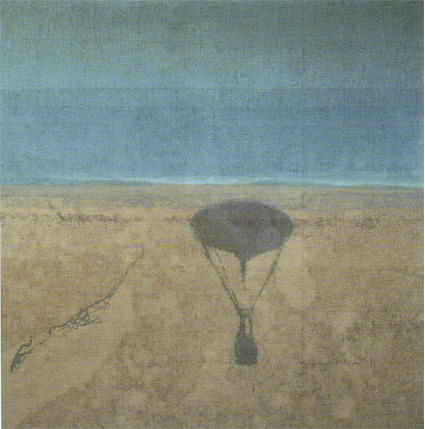Michael Andrews was an artist who painted slowly and with great deliberation, sometimes producing as few as one or two pictures a year and generally keeping such a low profile that it was once written of him that “he is in danger of being taken for a rumour rather than a person.” One of the most gifted and individual of post-war British artists, he died of cancer in 1995, aged 67. Three days from now the first retrospective exhibition of his work opens at Tate Britain. In anticipation, this week’s picture is a delicate and characteristically elusive example of his work, the seventh and last painting in an ambitious narrative series collectively called Lights. Its title is, simply, A Shadow.
The picture presents a deceptively simple, memorable and haunting image. On a warm day, the shadow of a hot-air balloon moves across an empty beach, drifting towards the great blue yonder of a gently breaking sea and an immense, hazy sky. A decade before he created the work, in some notes and jottings, Andrews had declared that “I want an actual present atmosphere in my painting”, adding “I don’t mind how I get it.” A Shadow, a painting of quiet but considerable technical accomplishment, marks the achievement of that ambition. It is one of those rare pictures that takes the viewer, almost instantly, elsewhere. But although it is so utterly precise in its evocation of a specific time and a place, it also has the mystery and ambiguity of a sharply drawn poetic image. Glimpsed on the threshold of land and sea, the drifting balloon is bound for who knows where.
Andrews embarked on his Lights series in the early 1970s. He was not interested in simply painting places, or in recreating atmospheric effects. He wanted to...

ITP 65: Lights VII, A Shadow by Michael Andrews
15-07-2001

